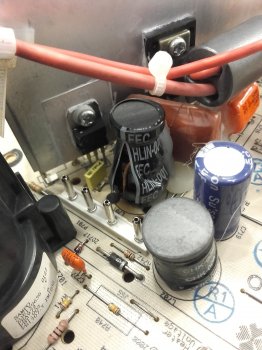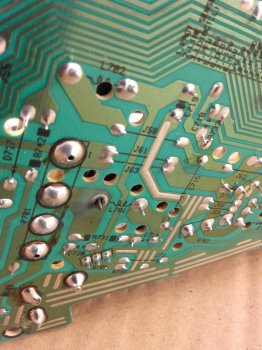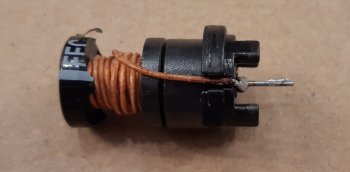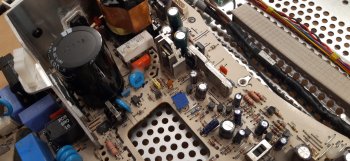Hi again.
During the process of rebuilding my old iMac G3 (400MHz from year 1999) i purchased another graphite one just in case my repair attempts would fail (i changed the flyback transformer and a resistor).
This graphite one is actually working but it came with two other non-working ones in a bundle.
After i could succesfully repair my old iMac and could even resolve the non-working Firewire ports thanks to member @MacTech68 i'm now trying to restore another spare one.
It's the said 700MHz model from the title.
I tried yesterday to turn it on and it wouldn't give any sign of life.
I took it apart and began replacing the big C905 from the PAV board for a slightly bigger on (400v 560uF OLD to 400v 680uF NEW) and the potentiometer VR901.
I then saw a busted inductor. See attached images.
Can someone guide me to how to read the value of this one to get an replacement?



On that last picture you can spot where it sparked from the other side of the board.
Now i think that an inductor rather fails by itself so i'm aware that probably there are more to it.
Thanksful for any help with troubleshooting...
During the process of rebuilding my old iMac G3 (400MHz from year 1999) i purchased another graphite one just in case my repair attempts would fail (i changed the flyback transformer and a resistor).
This graphite one is actually working but it came with two other non-working ones in a bundle.
After i could succesfully repair my old iMac and could even resolve the non-working Firewire ports thanks to member @MacTech68 i'm now trying to restore another spare one.
It's the said 700MHz model from the title.
I tried yesterday to turn it on and it wouldn't give any sign of life.
I took it apart and began replacing the big C905 from the PAV board for a slightly bigger on (400v 560uF OLD to 400v 680uF NEW) and the potentiometer VR901.
I then saw a busted inductor. See attached images.
Can someone guide me to how to read the value of this one to get an replacement?



On that last picture you can spot where it sparked from the other side of the board.
Now i think that an inductor rather fails by itself so i'm aware that probably there are more to it.
Thanksful for any help with troubleshooting...
Last edited:




